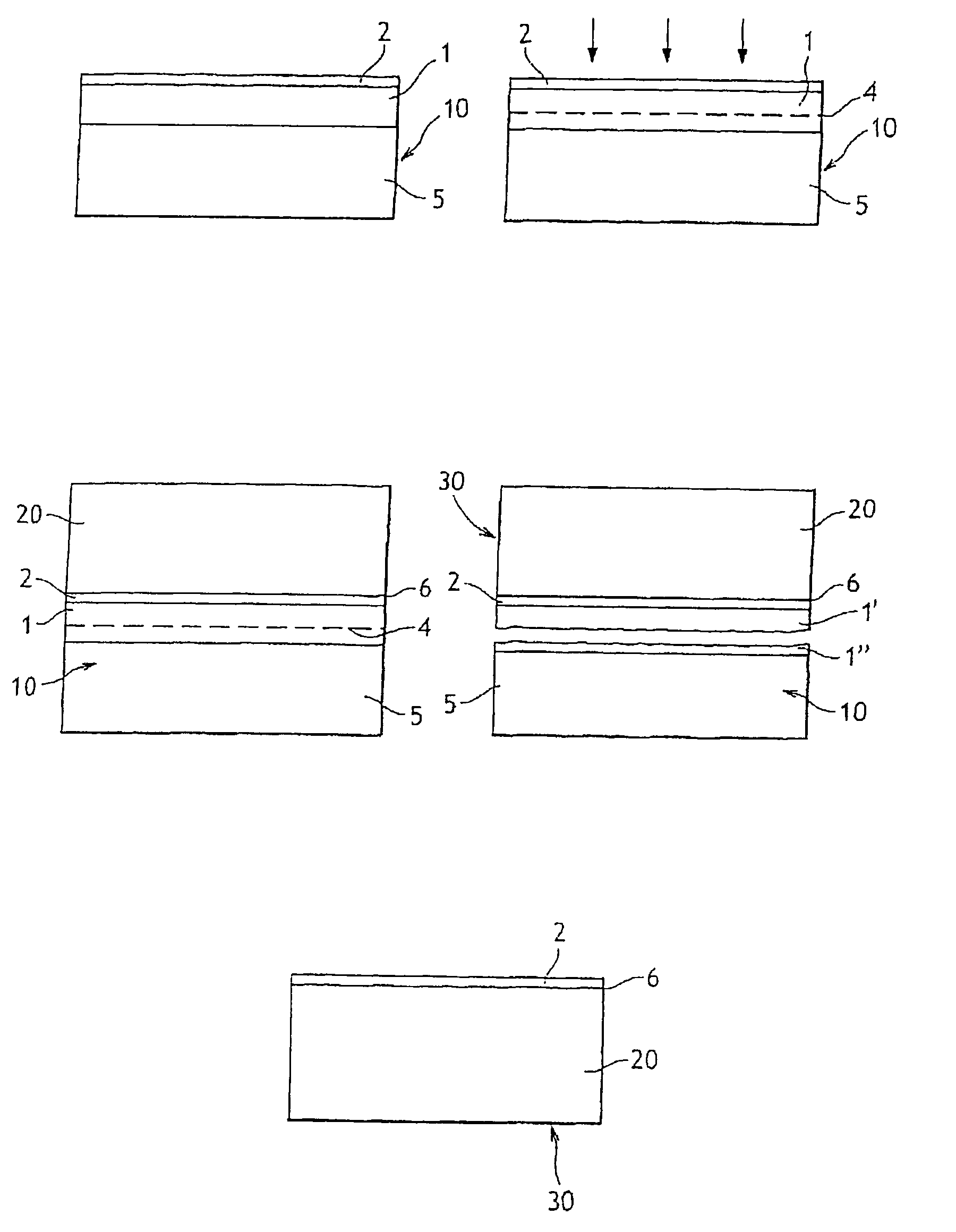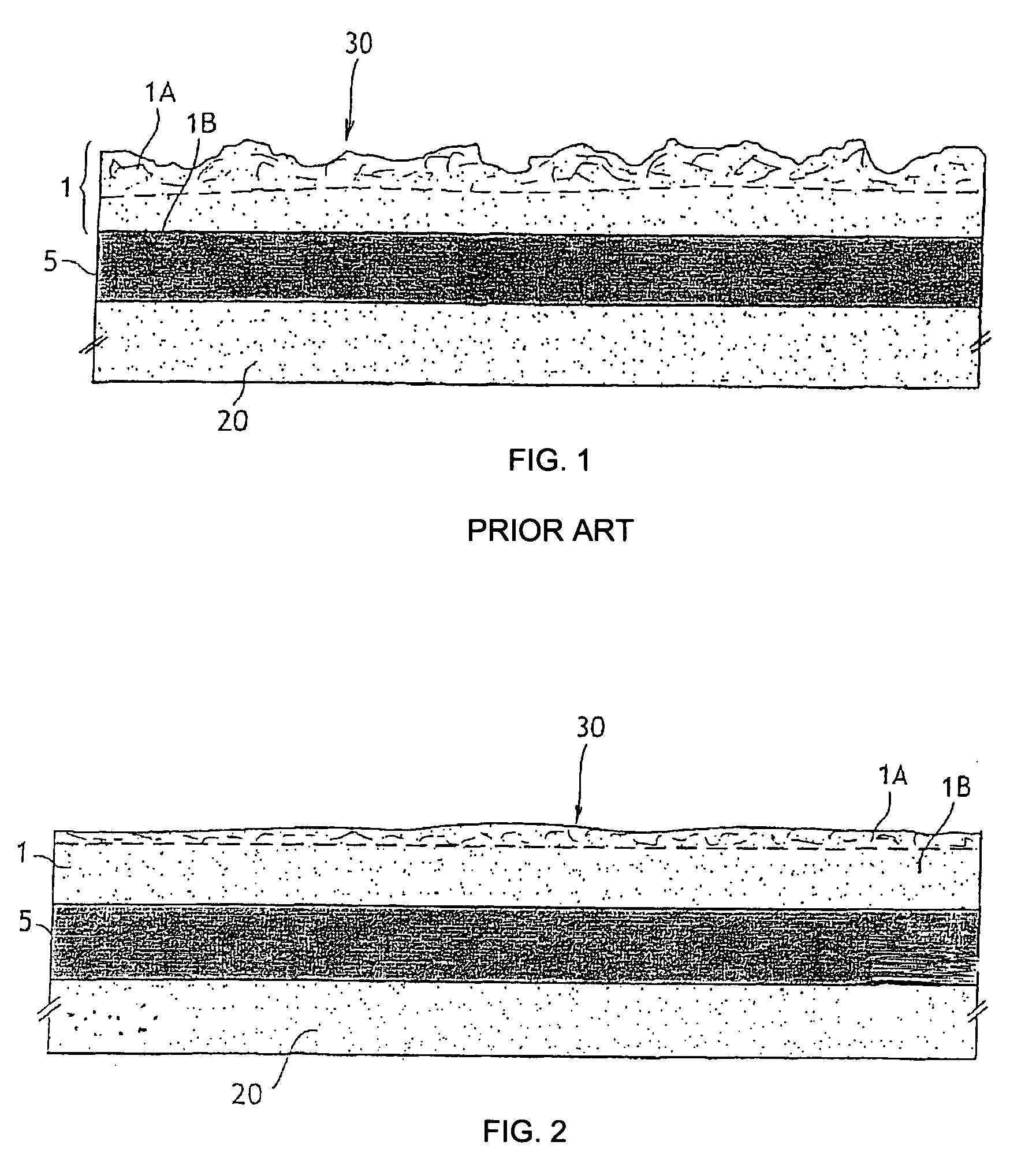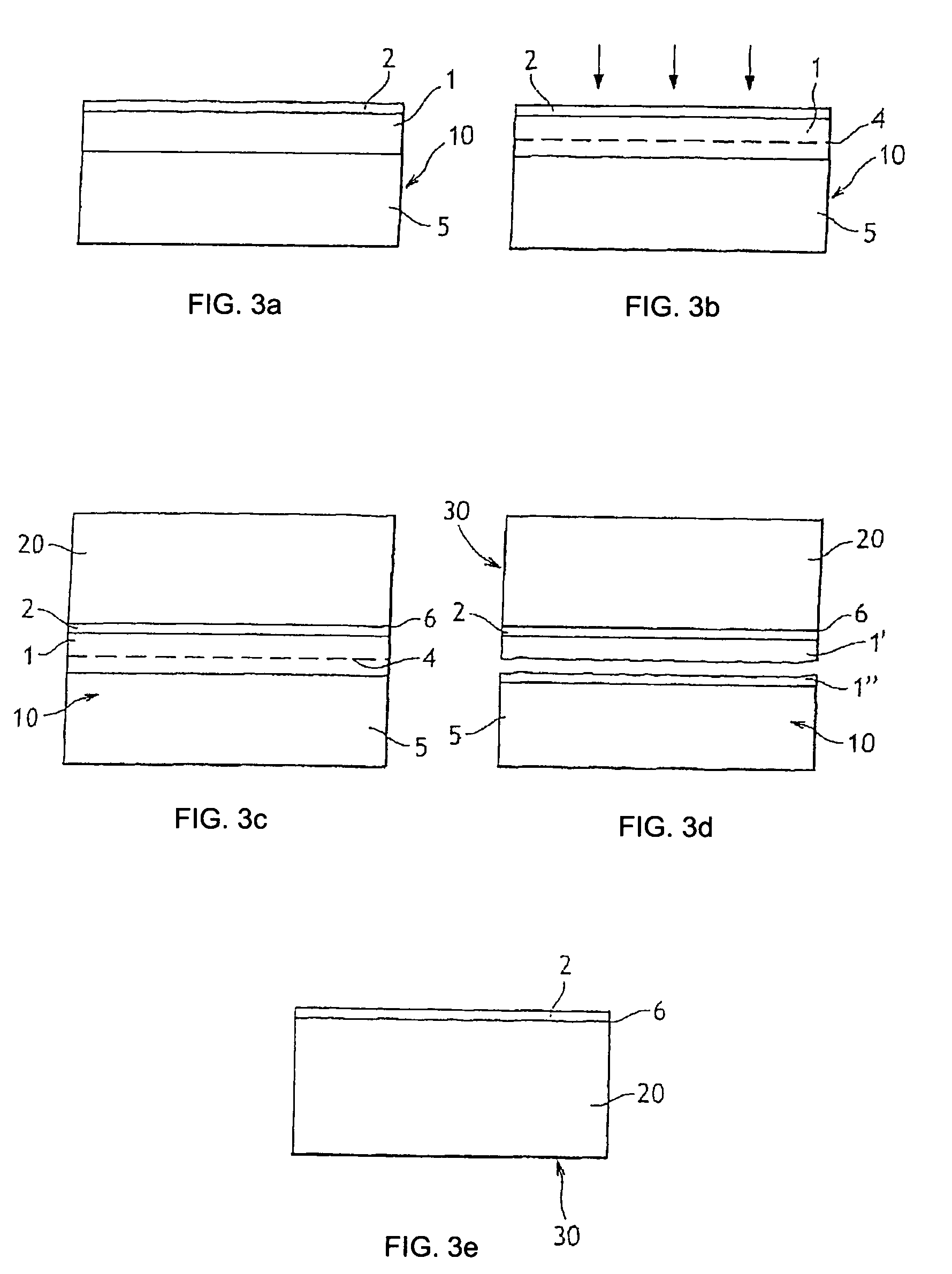Thermal treatment of a semiconductor layer
a technology of thermal treatment and semiconductor layer, which is applied in the manufacturing of semiconductor/solid-state devices, basic electric elements, electric devices, etc., can solve the problems of least partial detachment of the bonding interface, the crystalline quality of the detached layer b is reduced, and the duration of the treatment is reduced. , the effect of avoiding the use of mechanical polishing
- Summary
- Abstract
- Description
- Claims
- Application Information
AI Technical Summary
Benefits of technology
Problems solved by technology
Method used
Image
Examples
Embodiment Construction
[0023] As noted, the invention relates to a method of forming a structure comprising a layer that is detached from a donor wafer, the donor wafer comprising prior to detachment a first layer made of a semiconductor material comprising germanium. Preferably, the method comprises the following steps: [0024] (a) formation of a weakness zone in the thickness of the layer comprising germanium [0025] (b) bonding the donor wafer to a host wafer; and [0026] (c) supplying energy so as to weaken the donor wafer at the level of the weakness zone. Step (a) is advantageously carried out by subjecting the donor wafer to co-implantation of at least two different atomic species, while step (c) is advantageously carried out by performing a thermal treatment at a temperature between 300° C. and 400° C., for a duration that can last up from 30 minutes to four hours.
[0027] Other potential characteristics of the method according to the invention are as follows:
[0028] The thermal treatment of step (c) ...
PUM
 Login to View More
Login to View More Abstract
Description
Claims
Application Information
 Login to View More
Login to View More - R&D
- Intellectual Property
- Life Sciences
- Materials
- Tech Scout
- Unparalleled Data Quality
- Higher Quality Content
- 60% Fewer Hallucinations
Browse by: Latest US Patents, China's latest patents, Technical Efficacy Thesaurus, Application Domain, Technology Topic, Popular Technical Reports.
© 2025 PatSnap. All rights reserved.Legal|Privacy policy|Modern Slavery Act Transparency Statement|Sitemap|About US| Contact US: help@patsnap.com



